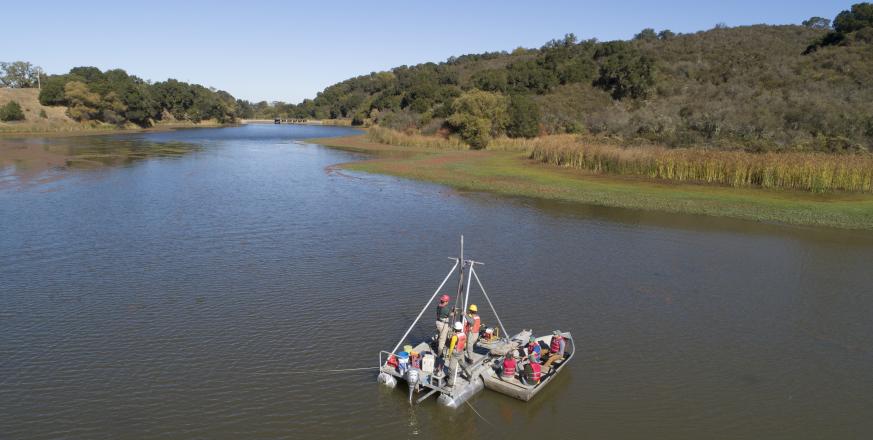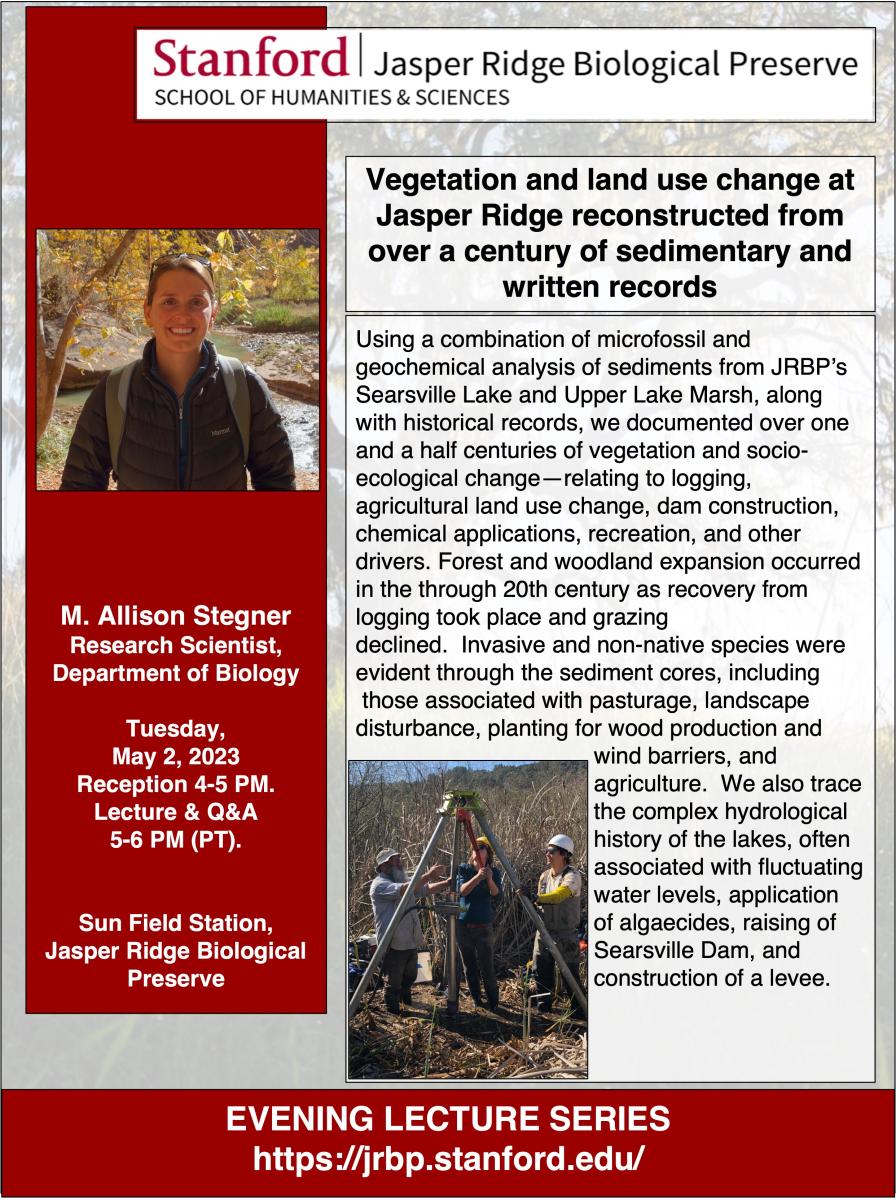Vegetation and land use change at Jasper Ridge reconstructed from over a century of sedimentary and written records

Vegetation and land use change at Jasper Ridge reconstructed from over a century of sedimentary and written records
M. Allison Stegner, Ph.D., Research Scientist, Department of Biology
Using a combination of microfossil and geochemical analysis of sediments from JRBP’s Searsville Lake and Upper Lake Marsh, along with historical records, we documented over one and a half centuries of vegetation and socio-ecological change—relating to logging, agricultural land use change, dam construction, chemical applications, recreation, and other drivers. Forest and woodland expansion occurred in the through 20th century as recovery from logging took place and grazing declined. Invasive and non-native species were evident through the sediment cores, including those associated with pasturage, landscape disturbance, planting for wood production and wind barriers, and agriculture. We also trace the complex hydrological history of the lakes, often associated with fluctuating water levels, application of algaecides, raising of Searsville Dam, and construction of a levee.
Tuesday, May 2, 2023
4-5 PM Reception
5-6 PM Lecture & Q&A
Sun Field Station, Jasper Ridge Biological Preserve




